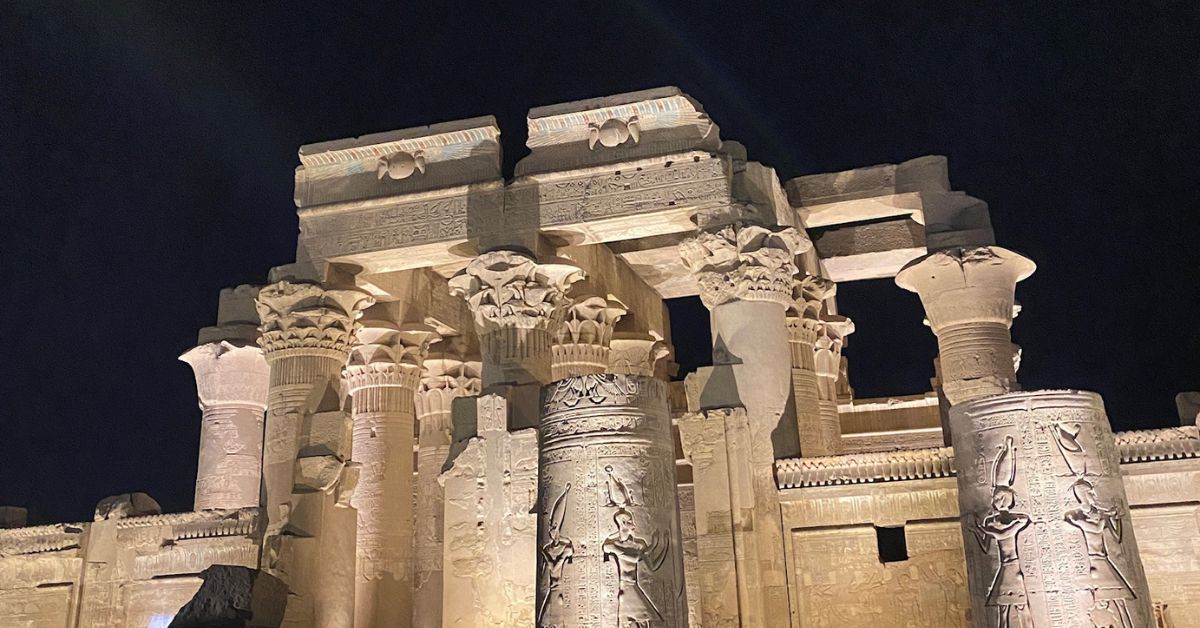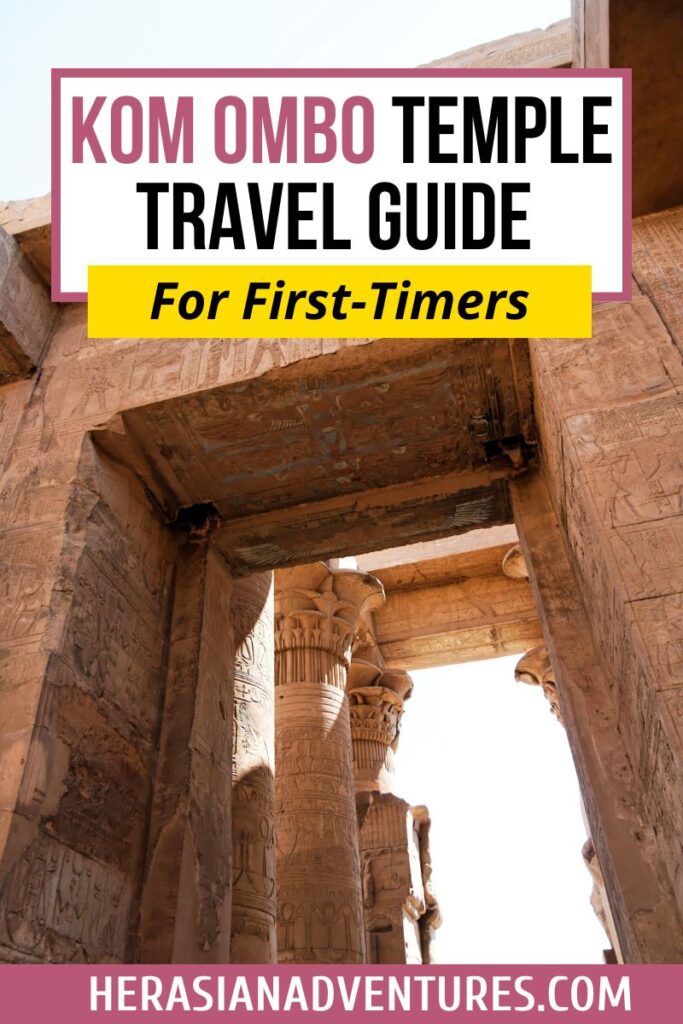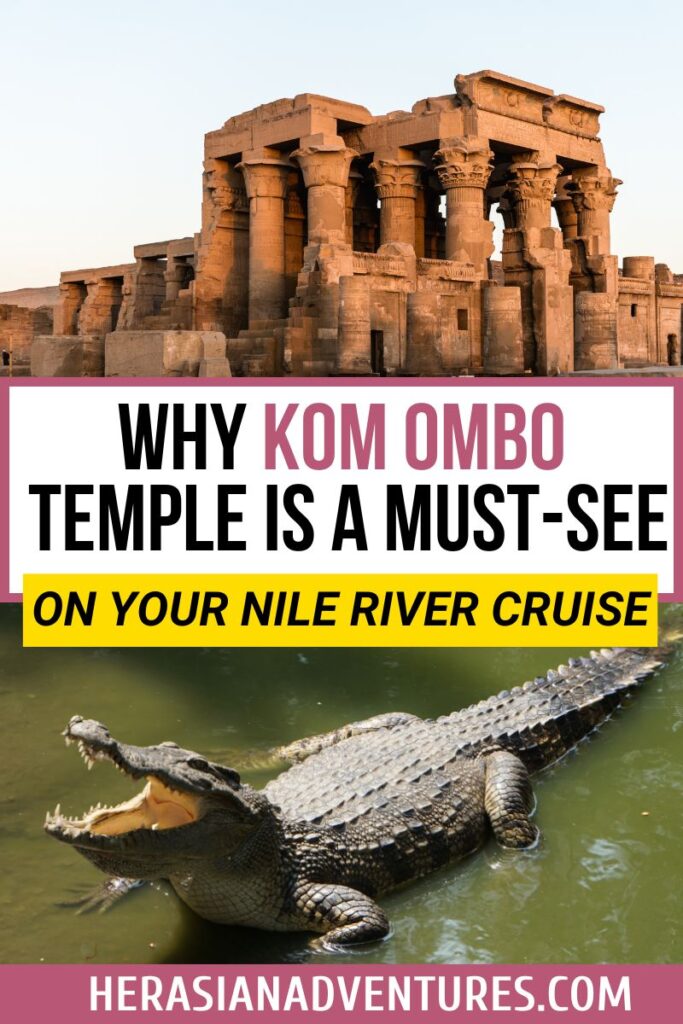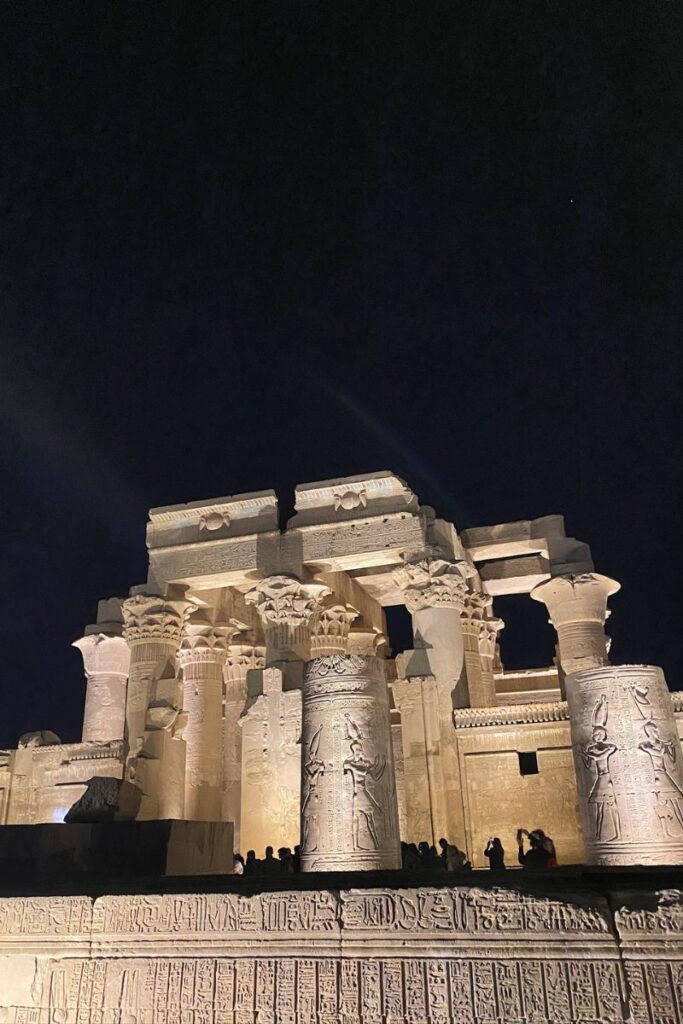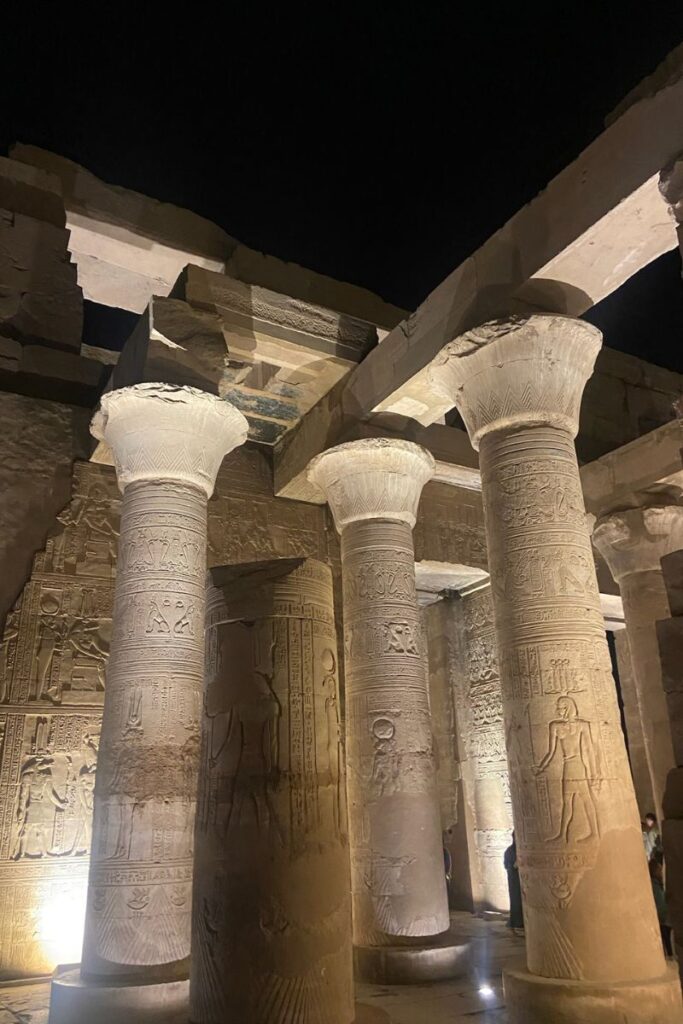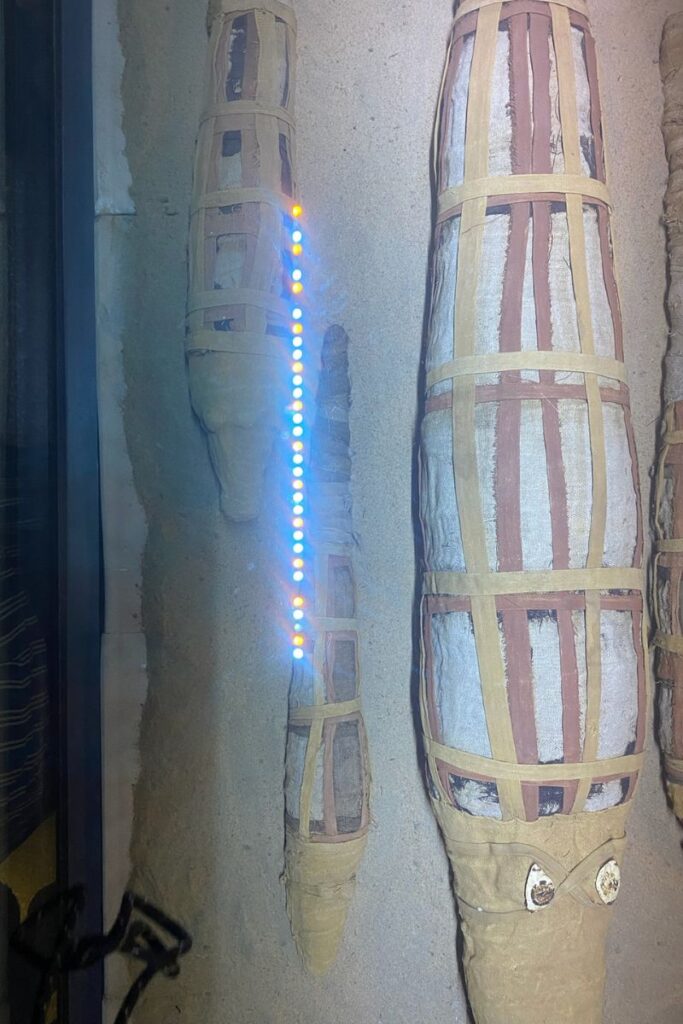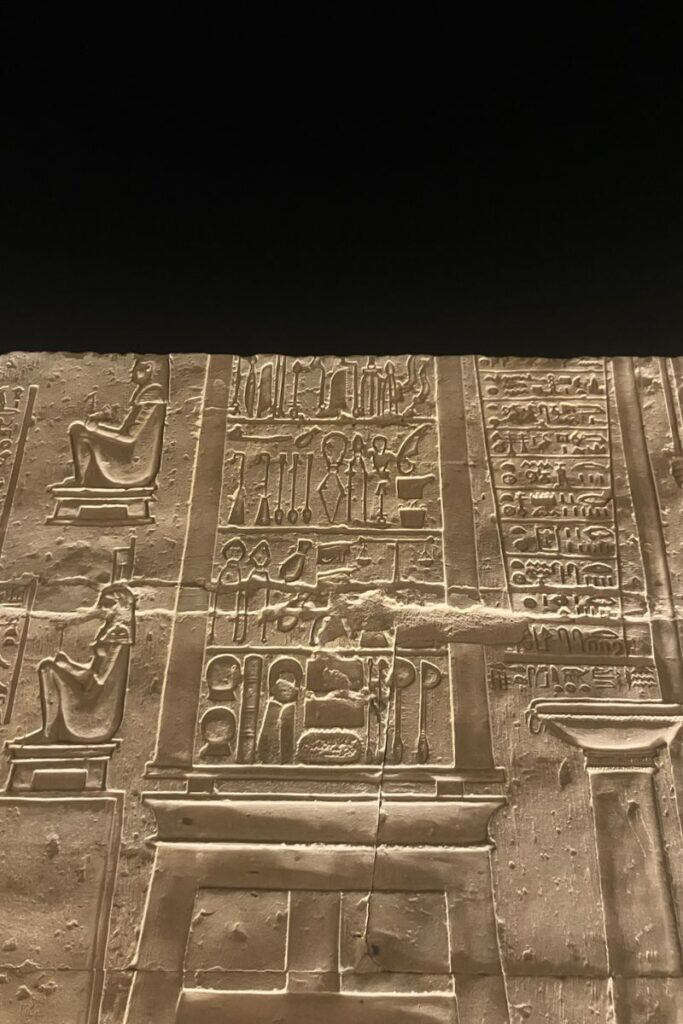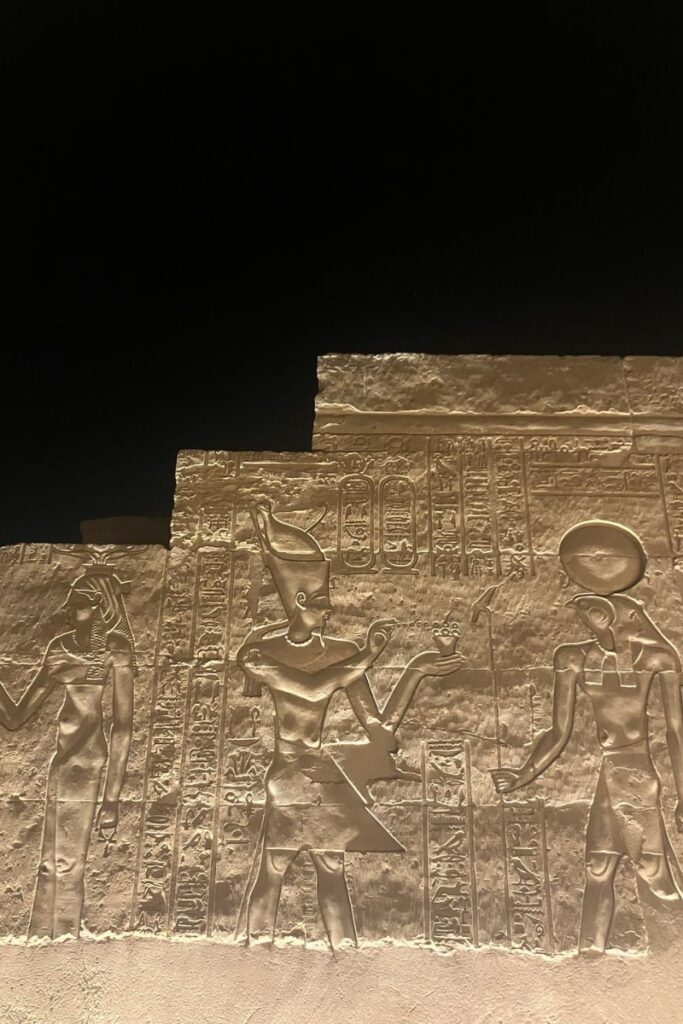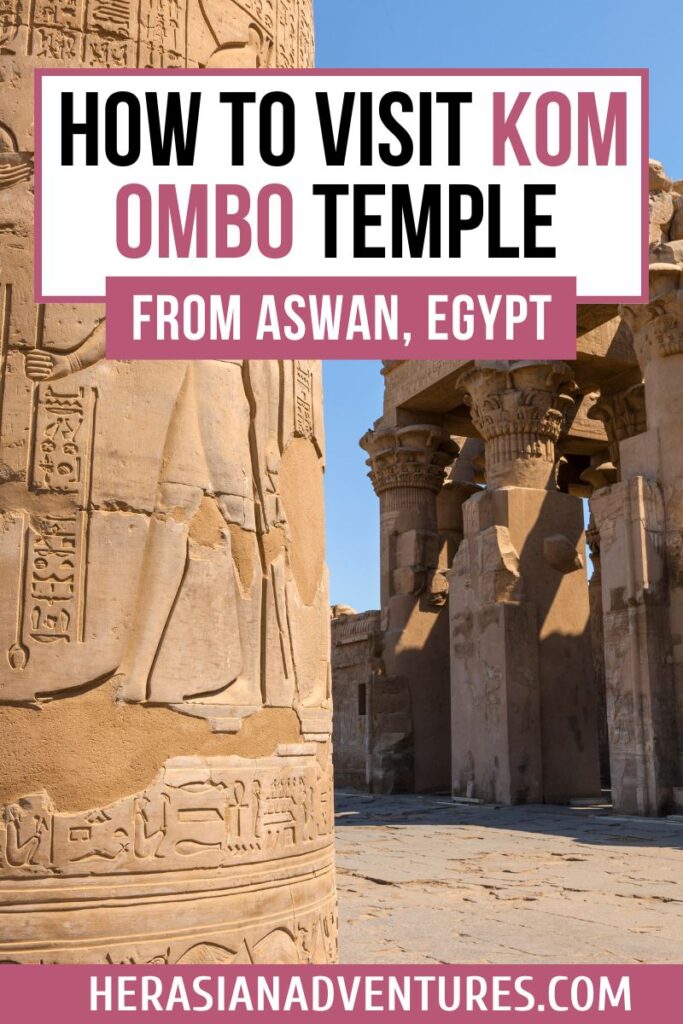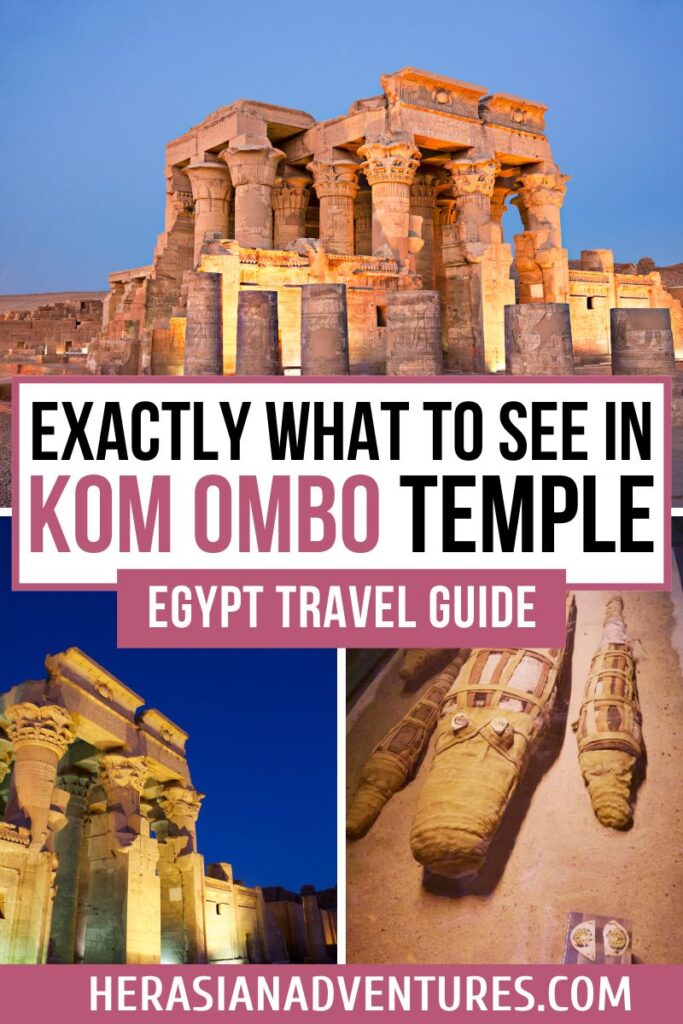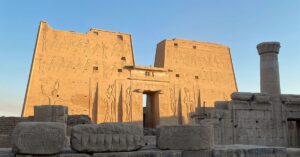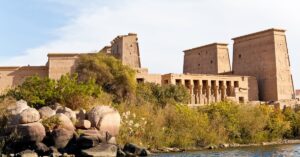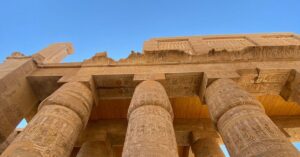Temple of Kom Ombo Egypt: The Ultimate Guide to the Crocodile Temple (2025)
Ever heard of a temple dedicated to both a falcon god and a crocodile? Trust me, the Temple of Kom Ombo is unlike anything else you’ll see in Egypt.
I visited the Temple of Kom Ombo during my Nile cruise from Aswan to Luxor, and honestly—I wasn’t expecting much. After checking off major highlights like the Pyramids of Giza, wandering through Khan el-Khalili Bazaar, and even sneaking in a day trip to Alexandria, this temple felt more like a filler stop than a must-see.
But I couldn’t have been more wrong.
From its rare double-temple layout to a room full of crocodile mummies (yes, really!), Kom Ombo ended up being one of the most memorable stops of my entire Egypt trip.
In this guide, I’m sharing everything you need to know about visiting the Temple of Kom Ombo: how to get there, the best time to go, what to see, and all my personal tips to help you make the most of your visit.
This post is all about visiting Kom Ombo Temple in Egypt
Table of Contents
Is Kom Ombo Temple Worth Visiting?
Definitely—especially if you’re traveling between Luxor and Aswan.
What makes Kom Ombo so special is its unusual double design. Unlike most temples in Egypt, this one’s dedicated to two gods: Sobek, the crocodile god of fertility and protection, and Horus the Elder, the falcon god of healing.
Everything at the temple is perfectly symmetrical—two sanctuaries, two halls, two entrances. It’s basically two temples in one, which gives Kom Ombo a totally different vibe compared to the others I visited.
Quick Facts about the Temple of Kom Ombo:
- Built during the Ptolemaic dynasty (around 180–47 BC)
- Designed with twin sanctuaries, halls, and doorways
- Contains carvings of ancient surgical tools
- Has a museum with real mummified crocodiles
- Heavily damaged by floods and earthquakes—but still beautifully preserved
It’s not as massive as Karnak or as jaw-dropping as Abu Simbel, but Kom Ombo has a unique charm that makes it absolutely worth a visit. Plus, the riverside views here are some of the best you’ll find in Upper Egypt!
How to Get to the Temple of Kom Ombo
The Temple of Kom Ombo is located about 45 km north of Aswan and 170 km south of Luxor, making it a perfect stop along the classic Nile River route. Whether you’re cruising or traveling independently, it’s surprisingly easy to add Kom Ombo to your itinerary.
Here are the best ways to get there:
1. Nile Cruise (Easiest Option)
Hands down, the easiest and most popular way to visit Kom Ombo is by Nile cruise. Most multi-day cruises between Luxor and Aswan include a scheduled stop here—usually in the late afternoon when the lighting is perfect for photos.
Your guide will typically walk you straight from the boat to the temple. You’ll get about an hour to explore before sailing on, often to Edfu Temple or Aswan.

2. Private Car From Aswan or Luxor
If you’re based in Aswan and want a little more flexibility, hiring a private driver is a great choice. It’s about a 45-minute drive from Aswan or around 1.5 hours from Luxor.
There’s no Uber in Aswan or Luxor, but private transfers are easy to book through hotels or local travel agencies. This option is perfect if you want to get there early and beat the cruise crowds—or if you’re short on time and want to squeeze in a few different temples in one day.
3. By Train (Budget Option)
If you’re traveling on a budget or just curious about riding Egypt’s trains, there’s a small station at Kom Ombo. Trains run between Aswan and Luxor and tickets are super affordable.
That said, train schedules can be unpredictable. Plus, the station is about 3 km from the temple, so you’ll need to hop in a tuk-tuk or taxi to reach the site. If you’re short on time—or not super comfortable navigating in Arabic—I’d recommend sticking with a cruise or private transfer for an easier experience.
Not sure how to negotiate prices for taxis, tuk-tuks, or even souvenirs? I’ve got you covered with this guide on how to haggle while traveling—it’s a skill that’ll come in handy all over Egypt!
Best Time to Visit Kom Ombo Temple
The best times to visit Kom Ombo are early in the morning or late in the afternoon, when the light is softer and the heat is a lot more manageable. The temple is open daily from 7:00 AM to 9:00 PM, with the last ticket sold at 8:00 PM.
If you’re visiting on a Nile cruise, you’ll probably stop in the late afternoon—which honestly works out perfectly. The lighting is beautiful, the temperatures are cooler, and it felt so different from my early morning visit to Philae Temple the day before.
If you’re traveling during Egypt’s hotter months—especially from May through September—definitely avoid midday. There’s almost no shade at Kom Ombo, and the sun can be absolutely brutal!
What to See at the Temple of Kom Ombo
Compared to other temples in Egypt, Kom Ombo is actually pretty small. In my opinion, you only need about an hour to explore—but there’s still so much packed into this site! Here are the top things you don’t want to miss:
1. The Twin Temples
This is what makes Kom Ombo so special. The temple was built for two gods—Sobek, the crocodile god of fertility and power, and Horus the Elder, the falcon god of healing and protection.
Each god has their own side of the temple, with separate entrances, sanctuaries, and altars. Everything is perfectly symmetrical, which is super rare in ancient Egyptian architecture. It really feels like you’re exploring two temples in one!
2. Wall of Surgical Instruments
One of the most surprising details? A wall carved with ancient surgical tools! You’ll spot scalpels, tweezers, scissors—even what looks like a bone saw.
Kom Ombo was once a center for healing, and this little corner of the temple shows just how advanced ancient Egyptian medicine really was. It’s easy to miss if you’re not looking for it, but definitely worth checking out.

3. The Ancient Calendar
I nearly walked right past this one, but it ended up being one of my favorite parts of the temple. Look closely and you’ll see a 2,200-year-old calendar carved into the stone—12 months, 30 days each, plus 5 extra festival days.
I’d seen similar artifacts at the Grand Egyptian Museum, but seeing it in its original setting felt totally different—weathered by time, yet still clear and brilliant. Don’t miss it.

4. The Sacred Well
Tucked near the back of the temple is an old stone well that once pulled water directly from the Nile. It’s a quiet little spot, but such a powerful reminder of how connected life and rituals were to the river.
Given that Kom Ombo is dedicated to Sobek, the crocodile god tied to water and fertility, it makes perfect sense that a well played an important role here. Don’t forget to peek in before you leave!
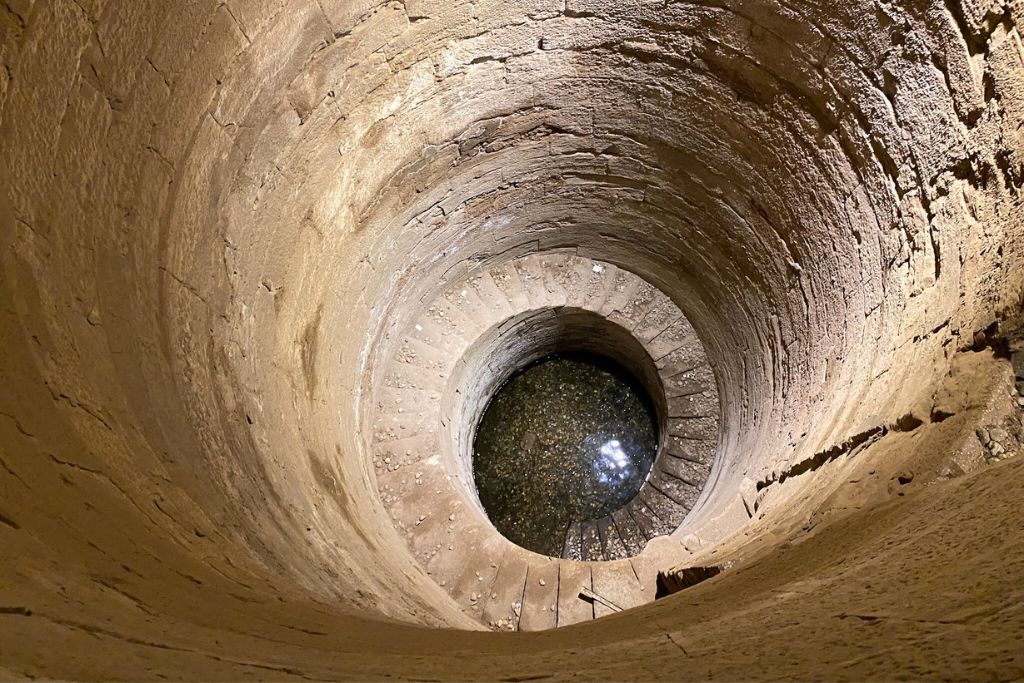
5. The Crocodile Museum
Yes, this is a real thing—and it’s awesome. Right next to the temple is a small but fascinating museum filled with mummified crocodiles that were once worshipped in honor of Sobek.
The museum is well-curated, super informative, and—bonus—it’s air-conditioned. It’s the perfect way to wrap up your visit, and since it’s included in your temple ticket, there’s no reason to skip it.
Craving more Egypt inspiration? Here are 5 Irresistible Reasons to Visit Egypt in 2025!
Tips for Visiting the Temple of Kom Ombo
To make your visit as easy and stress-free as possible, here are a few tips I really wish someone had told me before I went:
- Bring cash – There are no ATMs near the site, and small tips are expected for things like bathroom access or casual help from staff. Having a few small bills in your pocket will make life much easier.
- Wear closed shoes – The temple grounds are rocky, uneven, and dusty. Sandals might sound tempting in the heat, but trust me—your feet will be way happier in supportive, closed-toe shoes.
- Keep an eye on your belongings – I felt totally safe at Kom Ombo, even as a solo female traveler, but it’s always smart to stay aware. Use a crossbody bag, keep valuables tucked away, and be extra mindful near busy entrances or around vendors.
- Don’t count on food nearby – Kom Ombo is a small town with pretty limited food options. I’d recommend bringing your own Egyptian snacks and waiting to have a proper lunch once you’re back on your Nile cruise or at your hotel in Aswan or Luxor.
- Photography is welcome – You’re free to snap all the photos you want around the temple—and honestly, you’ll want to! Just avoid using flash inside the Crocodile Museum to help preserve the exhibits.
- Plan for a quick visit – Most Nile cruises run on tight schedules, so you won’t have tons of time to wander. If you want good photos or a few extra minutes to soak it all in, try to move a little quickly when you arrive—you’ll be glad you did.
- Hire a guide if you can – You can definitely visit Kom Ombo Temple without a guide, but having one made a huge difference. Our guide pointed out so many little details we would’ve 100% missed on our own, so honestly, I think it’s worth the extra cost.
Bonus Tip: Most people treat Kom Ombo as a quick stop, but if you take your time, you’ll realize it’s packed with incredible stories and hidden gems. Don’t rush—soak it in.
Where to Stay Near Kom Ombo Temple
Just like Edfu, there’s not a lot going on in Kom Ombo itself, and the town doesn’t offer many places to stay. I’d recommend either visiting as part of a Nile cruise or basing yourself in Aswan or Luxor, where you’ll find way more options for hotels, restaurants, and things to do.
Here are a few top picks depending on your style and budget:
- Luxury: Sofitel Legend Old Cataract (Aswan) or Sofitel Winter Palace (Luxor) for historic charm and beautiful Nile views.
- Boutique: Al Moudira Hotel (Luxor) for a peaceful, design-forward escape.
- Mid-Range: Mövenpick Resort (Aswan) or Djorff Palace (Luxor) for travelers who want comfort, character, and beautiful settings without breaking the bank.
- Budget: Kato Waidi Nubian Guest House (Aswan) or Iberotel (Luxor) for affordability and great locations.
P.S. If you’re planning time in Cairo too, don’t miss my guide to the best Cairo hotels for first-time visitors—it’s packed with tips and personal favorites to help you plan the perfect stay!
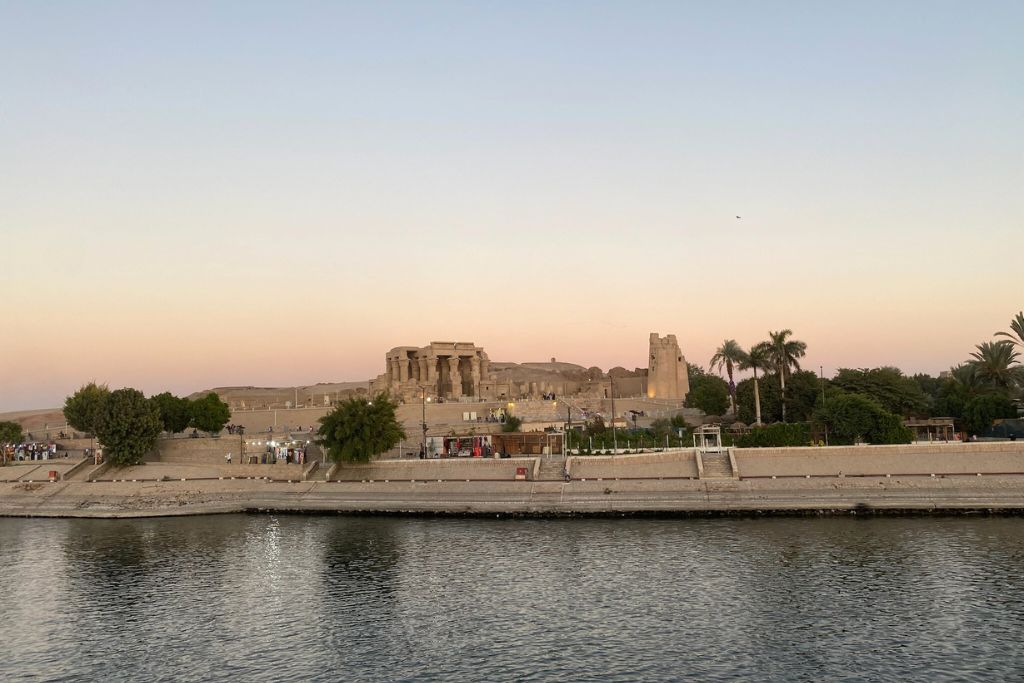
FAQs About the Temple of Kom Ombo
Before we wrap up this Kom Ombo temple guide, here are some of the most common questions I’ve seen from travelers—plus a few personal tips I picked up during my own visit.
Kom Ombo is one of Egypt’s only double temples, dedicated to two gods: Sobek and Horus the Elder. Its perfectly symmetrical design is rare in ancient Egypt. The temple also served as a center for medicine, with detailed carvings of surgical instruments still visible on the stone walls.
Tickets usually cost around 200–250 EGP (about $6–8 USD), and that includes entry to the Crocodile Museum. Bring cash—cards aren’t accepted at the entrance, and there aren’t any ATMs nearby, especially if you’re visiting on your own without a tour.
A guide isn’t strictly necessary, but it’s highly recommended. Guides can point out small details like carvings of surgical instruments and mythological scenes that are easy to miss. If you’re interested in history or want a deeper understanding of the site, hiring a guide is a great idea.
Yes, Kom Ombo is generally safe for solo female travelers. The site is calm, not overly crowded, and vendors are usually polite. As with any travel in Egypt, it’s smart to dress modestly, stay aware of your surroundings, bring water, and keep personal belongings secure.
I’d plan for about 1 to 1.5 hours. That gives you plenty of time to explore the temple, check out the Crocodile Museum, and enjoy the riverside views without rushing. It’s not a huge site, but there’s definitely enough to keep you interested the whole time.
Final Thoughts on Visiting Kom Ombo Temple
That’s everything you need to know about visiting Kom Ombo Temple in Egypt! Whether you’re interested in ancient medicine, crocodile gods, or simply want to enjoy beautiful views of the Nile, this unique site is definitely worth adding to your itinerary.
Thinking about visiting Kom Ombo, or already been? Feel free to share your thoughts in the comments!

Other Egypt Travel Guides You Might Enjoy:
- 3 Perfect Days in Cairo: The Ultimate Itinerary You’ll Want to Steal
- 10 Unique Things to Do in Cairo You Haven’t Heard Of
- Is Egypt Worth Visiting? Here’s What No One Tells You
- Uber in Egypt: What to Know Before You Ride
- 15 Must-Try Egyptian Foods That’ll Blow Your Mind
Liked This Kom Ombo Temple Guide? Pin it for Later!

